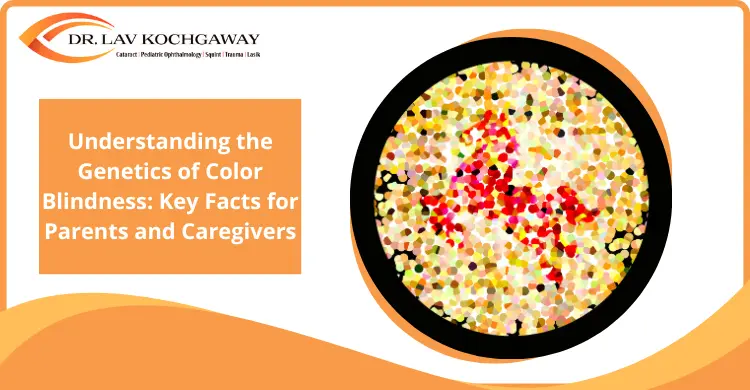
Color blindness, or color vision deficiency, affects how people perceive colors and can impact a child’s ability to learn and interact with their environment. While it may seem like a minor issue, color blindness can pose challenges, especially when it goes undetected. Because most cases are inherited, it’s important for parents and caregivers to understand how genetics play a role in this condition.
Learn how color blindness develops, how it’s inherited, and what you can do to support your child early.
Color blindness refers to the inability or reduced ability to distinguish between certain colors. It doesn’t usually mean a person sees the world in black and white. Instead, they may confuse specific shades or find it hard to tell colors apart.
Color blindness is typically classified into three main types:
Color blindness is most commonly inherited and linked to the X chromosome. It is considered an X-linked recessive condition. This indicates that color blindness is linked to a gene on the X chromosome.
Males have one X and one Y chromosome. If the X chromosome carries the color blindness gene, the male will express the condition. Females have two X chromosomes, meaning both must carry the gene for the condition to manifest.
A mother who carries the gene has a 50% chance of passing it on to her sons. Daughters may become carriers themselves and, if they inherit two copies of the gene, may develop the condition rarely.
Understanding the genetic pattern helps families anticipate and identify the condition early.
Many children don’t realize they see colors differently. Parents and caregivers are often the first to spot the signs.
Common symptoms of color blindness in children include:
If these signs are present, it may be time to schedule color blindness testing. Tests such as the Ishihara color test are commonly used to diagnose red-green deficiencies and can be performed by pediatric eye care specialists.
Early testing is especially important if there’s a known family history of inherited color blindness.
Color blindness does not cause vision loss or eye disease, but it can impact everyday experiences, especially in learning environments.
Children with color blindness may:
Early awareness allows families and educators to offer the right accommodations and emotional support. Explaining the condition to the child in a positive way can help build their confidence and reduce anxiety.
Regular eye check-ups ensure your child’s visual health is being monitored, especially if any new symptoms arise or there’s a concern about learning difficulties.
Understanding the genetics of color blindness empowers families to take proactive steps. Since most cases are inherited through X-linked traits, recognizing patterns in family history and observing early symptoms can lead to a timely diagnosis and support.
With the right awareness, accommodations, and encouragement, children with color blindness can succeed in school, socialize confidently, and adapt to their world effectively.
Concerned about color vision in your child? Dr. Lav Kochgaway offers expert pediatric eye care to identify inherited color vision issues early.
Book a consultation today and give your child the support they need to thrive in school and daily life.
Color blindness usually results from a genetic mutation that impacts the retina’s cone cells, which detect and process color. Most cases are inherited through X-linked recessive genes.
Color blindness is most commonly passed down from the mother, who may be a carrier of the gene on one of her X chromosomes. Sons are more likely to be affected because they have only one X chromosome.
Children can be tested for color blindness as early as 4 years old, especially if there’s a family history or if they show signs of difficulty with color identification.
Common signs include trouble naming colors, confusing reds with greens, using incorrect colors in drawings, and struggling with color-coded tasks in school.
Though inherited color blindness is not curable, practical aids such as apps, filtered lenses, and school-based accommodations can greatly assist children in managing daily challenges.